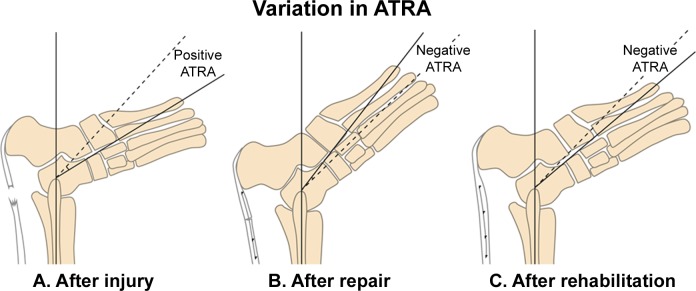Figure 2.
The relative Achilles tendon resting angle (ATRA) following rupture, after operative repair, and after rehabilitation. The ATRA is the angle between the long axis of the fibula and the line from the tip of the fibula to the center of the head of the fifth metatarsal. (A) Following rupture, the ankle adopts a relatively dorsiflexed position5,7; the ATRA of the injured side (solid line) and is compared with the ATRA of the noninjured side (dashed line). This increment in angle would lead to the Achilles healing with elongation and the patient to have weak active plantar flexion, and so it is termed a negative ATRA. (B) Following repair, the ankle is relatively plantar flexed compared to the noninjured side. The ATRA is described/defined as positive, as the Achilles is relatively tight. (C) Following brace removal, increased mobilization, and rehabilitation, the injured tendon elongates, so the ATRA increases and is described/defined as negative.

